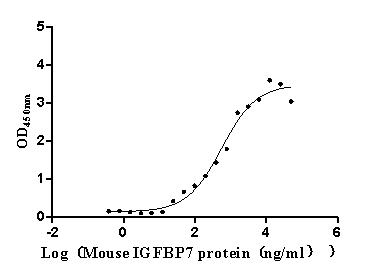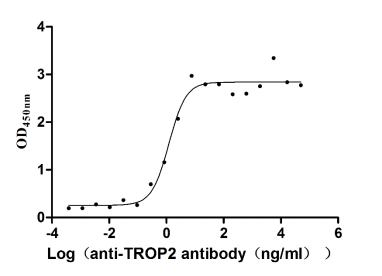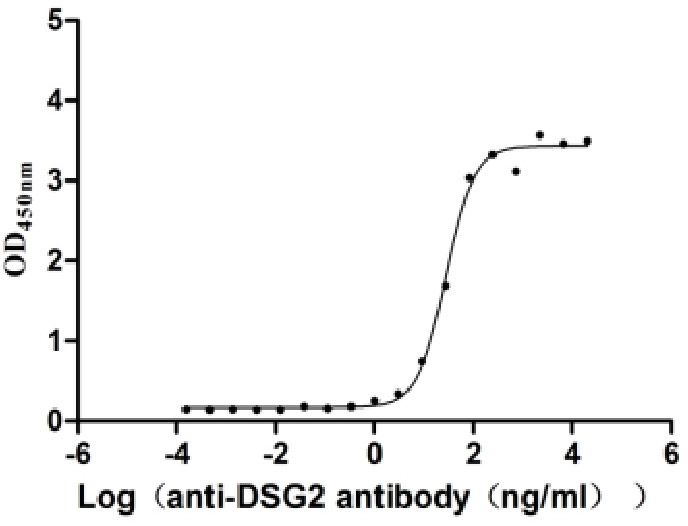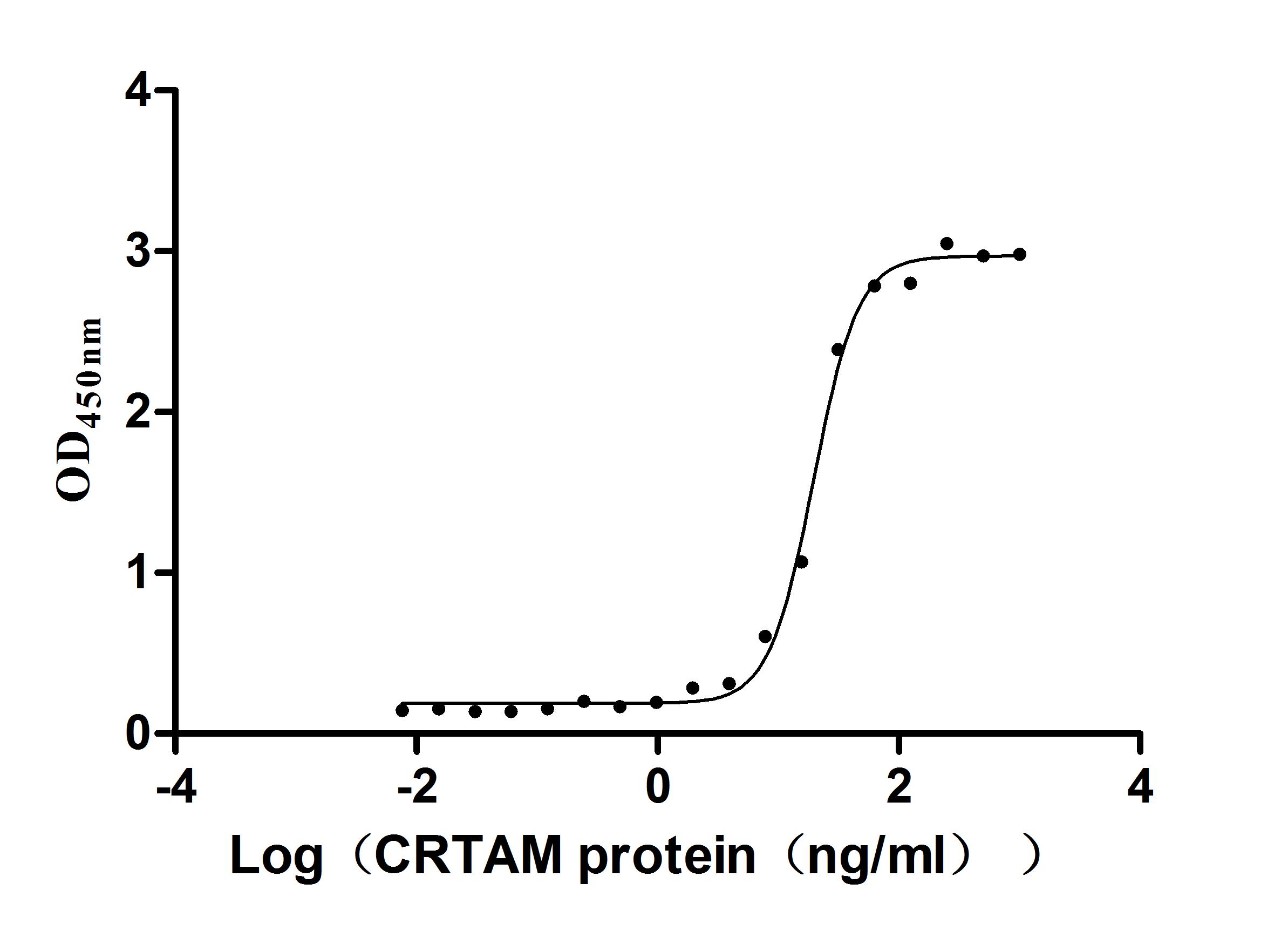Recombinant Human Activin receptor type-1 (ACVR1 ACVRLK2)
-
中文名稱:
-
貨號:CSB-YP001257HU
-
規格:
-
來源:Yeast
-
其他:
-
中文名稱:
-
貨號:CSB-EP001257HU
-
規格:
-
來源:E.coli
-
其他:
-
中文名稱:
-
貨號:CSB-EP001257HU-B
-
規格:
-
來源:E.coli
-
共軛:Avi-tag Biotinylated
E. coli biotin ligase (BirA) is highly specific in covalently attaching biotin to the 15 amino acid AviTag peptide. This recombinant protein was biotinylated in vivo by AviTag-BirA technology, which method is BriA catalyzes amide linkage between the biotin and the specific lysine of the AviTag.
-
其他:
-
中文名稱:
-
貨號:CSB-BP001257HU
-
規格:
-
來源:Baculovirus
-
其他:
-
中文名稱:
-
貨號:CSB-MP001257HU
-
規格:
-
來源:Mammalian cell
-
其他:
產品詳情
-
純度:>85% (SDS-PAGE)
-
基因名:
-
Uniprot No.:
-
別名:Activin receptor type-1; EC 2.7.11.30; Activin receptor type I; ACTR-I; Activin receptor-like kinase 2; ALK-2; Serine/threonine-protein kinase receptor R1; SKR1; TGF-B superfamily receptor type I; TSR-I; ACVR1 ACVRLK2
-
種屬:Homo sapiens (Human)
-
蛋白標簽:Tag?type?will?be?determined?during?the?manufacturing?process.
The tag type will be determined during production process. If you have specified tag type, please tell us and we will develop the specified tag preferentially. -
產品提供形式:Liquid or Lyophilized powder
Note: We will preferentially ship the format that we have in stock, however, if you have any special requirement for the format, please remark your requirement when placing the order, we will prepare according to your demand. -
復溶:We recommend that this vial be briefly centrifuged prior to opening to bring the contents to the bottom. Please reconstitute protein in deionized sterile water to a concentration of 0.1-1.0 mg/mL.We recommend to add 5-50% of glycerol (final concentration) and aliquot for long-term storage at -20℃/-80℃. Our default final concentration of glycerol is 50%. Customers could use it as reference.
-
儲存條件:Store at -20°C/-80°C upon receipt, aliquoting is necessary for mutiple use. Avoid repeated freeze-thaw cycles.
-
保質期:The shelf life is related to many factors, storage state, buffer ingredients, storage temperature and the stability of the protein itself.
Generally, the shelf life of liquid form is 6 months at -20°C/-80°C. The shelf life of lyophilized form is 12 months at -20°C/-80°C. -
貨期:Delivery time may differ from different purchasing way or location, please kindly consult your local distributors for specific delivery time.Note: All of our proteins are default shipped with normal blue ice packs, if you request to ship with dry ice, please communicate with us in advance and extra fees will be charged.
-
注意事項:Repeated freezing and thawing is not recommended. Store working aliquots at 4°C for up to one week.
-
Datasheet :Please contact us to get it.
相關產品
靶點詳情
-
功能:Bone morphogenetic protein (BMP) type I receptor that is involved in a wide variety of biological processes, including bone, heart, cartilage, nervous, and reproductive system development and regulation. As a type I receptor, forms heterotetrameric receptor complexes with the type II receptors AMHR2, ACVR2A ors ACVR2B. Upon binding of ligands such as BMP7 or GDF2/BMP9 to the heteromeric complexes, type II receptors transphosphorylate ACVR1 intracellular domain. In turn, ACVR1 kinase domain is activated and subsequently phosphorylates SMAD1/5/8 proteins that transduce the signal. In addition to its role in mediating BMP pathway-specific signaling, suppresses TGFbeta/activin pathway signaling by interfering with the binding of activin to its type II receptor. Besides canonical SMAD signaling, can activate non-canonical pathways such as p38 mitogen-activated protein kinases/MAPKs.
-
基因功能參考文獻:
- Identification of small molecule inhibitors of ALK2: a virtual screening, density functional theory, and molecular dynamics simulations study. PMID: 30159679
- Results showed that ACVR1 was a direct target of miR-384 and was involved in the inhibitory effects of miR-384 on breast cancer progression. Furthermore, the study indicated that ACVR1 activated the Wnt/beta-catenin signaling pathway in breast cancer. PMID: 29693185
- Study emphasizes about the role of ACVR1 which encoding a receptor for BMP proteins in fibrodysplasia ossificans progressiva (FOP). Most FOP patients carry the recurrent R206H substitution in the GS domain, whereas a few other mutations are responsible for limited cases. Mutations cause a dysregulation of the downstream BMP-dependent pathway making mutated ACVR1 responsive to a non-canonical ligand, Activin A. [review] PMID: 29587443
- The role of an ALK2 mutation (R258S) in IRIDA development in a patient also bearing compound heterozygous mutations in TMPRSS6 was demonstrated by reconstructing in vitro the proband's genotype, expressing mutants TMPRSS6 and ACVR1 in the presence of hemojuvelin and assessing hepcidin activation. ALK2(R258S) maintained high hepcidin expression in the presence of MT2(I212T). PMID: 28476747
- activation of AMPK upregulated Smad6 and Smurf1 and thereby enhanced their interactions, resulting in its proteosome-dependent degradation of ALK2. PMID: 28847510
- the Fibrodysplasia Ossificans Progressiva mutation ACVR1(R206H) is more sensitive to a number of natural ligands. PMID: 27713089
- both bone morphogenetic protein 2 (BMP2) and BMP6 are proangiogenic in vitro and ex vivo and that the BMP type I receptors, activin receptor-like kinase 3 (ALK3) and ALK2, play crucial and distinct roles in this process. PMID: 28733457
- Fibrodysplasia ossificans progressiva (FOP) syndrome is caused by mutation of the gene ACVR1. Developed is a simplified one-step procedure by simultaneously introducing reprogramming and gene-editing components into human fibroblasts derived from patient with FOP. The one-step-mediated ALK2 gene-corrected induced pluripotent stem cells restored global gene expression pattern. PMID: 27256111
- The ACVR1 R206H mutation may not directly increase the formation of mature chondrogenic or osteogenic cells. PMID: 27530160
- Authors demonstrated that the BMP type I receptor ALK-2 (encoded by the ACVR1 gene) has crucial roles in apoptosis induction of patient-derived glioma-initiating cells (GICs), TGS-01 and TGS-04. PMID: 28459464
- Data suggest BMP9/GDF2 and BMP10 synergize with TNFA to increase monocyte recruitment to vascular endothelial cells; process appears to be mediated mainly via ALK2/ACVR1 (which exhibits protein kinase activity). These studies used in vitro flow monocyte adhesion assay. (BMP9 = growth differentiation factor 2; BMP10 = bone morphogenetic protein 10; TNFA = tumor necrosis factor alpha; ALK2/ACVR1 = activin A receptor type 1) PMID: 28646109
- The effects of ACVR1/ALK2 mutations causing fibrodysplasia ossificans progressiva are extended to the central nervous system. Brainstem hamartomatous lesions and dysmorphisms, variably associated with dentate nucleus and basal ganglia signal abnormalities and/or calcifications, may represent useful disease hallmarks. PMID: 27565519
- Low ALK2 expression is associated with invasiveness of breast cancer. PMID: 28075462
- Further investigation on clinical ESCC samples and non-tumorous adjacent tissue found that tumors with triple-positive BMP6, ALK2 and BMPRII had deeper growth than tumors with only BMP6 expression PMID: 27959431
- The clinical manifestations, the disease course, and the molecular findings of involvement of ACVR1 gene in this family are suggestive of "FOP variant" or an unusual ACVR1-related skeletal dysplasia PMID: 27182040
- Activin-A is increased in the airway of asthmatics and peaks during asthma exacerbations.Activin-A signalling pathways are dysregulated in severe asthma. PMID: 26869672
- Common mutations in ALK2/ACVR1, a multi-faceted receptor, have roles in distinct pediatric musculoskeletal and neural orphan disorders. PMID: 26776312
- The higher PE activin A concentrations resulted in abnormal endothelial functions, which may contribute to the systemic maternal vascular endothelial cell dysfunction observed in the disorder. PMID: 26597752
- A report of two patients has been presented with multi-system involvement in a severe variant of fibrodysplasia ossificans progressiva caused by the ACVR1 c.772G>A; R258G mutation. PMID: 26097044
- Fibrodysplasia ossificans progressiva-ACVR1 abnormally transduces bone morphogenetic protein signaling in response to Activin-A. PMID: 26621707
- Changes in the binding site residue(e.g. pre-hinge region in ALK2) or side chain orientation (e.g. Tyr219 in caALK2 vs. wtALK2), or ligand modification (e.g. DMH1 vs. LDN193189) causes distinct binding profiles and selectivity among BMP inhibitors. PMID: 26133550
- heterozygous mutation i.e., c.617(G>A)in ACVR1 was detected in patients with rare genetic disorder - Fibrodysplasia ossificans progressiva PMID: 23918320
- miR-148a is an important mediator of ACVR1, thus offering a new potential target for the development of therapeutic agents against Fibrodysplasia ossificans progressiva. PMID: 22408438
- Genetic analysis of ACVR1 identified the recurrent allelic variant c.617 G>A; p.R206H in 12 of 14 Fibrodysplasia Ossificans Progressiva (FOP)patients. One of the remaining patients had a previously reported allele c.1067G>A; p.G356D in the 9th exon and the second allele c.983G>A; p.G328E in the 8th exon of ACVR1. PMID: 26058333
- clinically aggressive stem cell-like subtype of hepatocellular carcinoma characterized by miR-148a-ACVR1-BMP-Wnt circuit PMID: 25271001
- compounds demonstrated consistent binding to a panel of mutant and wild-type ALK2 proteins PMID: 25101911
- ALK2 (R206H) mutation increases osteoclast formation through TGF-beta. The activation of activin-like kinase signaling enhanced osteoclast formation through TGF-beta expression during heterotopic ossification in muscle tissues. PMID: 24798338
- The findings provide novel insights into the molecular mechanisms that regulate expression of the ACVR1 gene and that could be targets of new strategies for future therapeutic treatments. PMID: 24047559
- Recurrent somatic mutations in ACVR1 in pediatric midline high-grade astrocytoma. PMID: 24705250
- Recurrent somatic mutations in ACVR1 found in diffuse intrinsic pontine gliomas. PMID: 24705251
- Recurrent activating ACVR1 mutations in diffuse intrinsic pontine glioma. PMID: 24705252
- ACVR1 mutations in diffuse intrinsic pontine gliomas were constitutively activating, leading to SMAD phosphorylation and increased expression of the downstream activin signaling targets ID1 and ID2. PMID: 24705254
- Glucocorticoids recruit Tgfbr3 and Smad1 to shift transforming growth factor-beta signaling from the Tgfbr1/Smad2/3 axis to the Acvrl1/Smad1 axis in lung fibroblasts. PMID: 24347165
- Presence of the 455C allele of BMP4 and the 8474T allele of ACVR1 gene was significantly associated with decreased left ventricular ejection fraction (LVEF) (p=0.0004 and p=0.046, respectively). PMID: 22971142
- ALK2 may be an important receptor in ET-1 production during BMPR2 knockdown PMID: 23142694
- Functional analysis of the 3'UTR region by Luciferase reporter assays showed that it plays an inhibitory role on ACVR1/Alk-2 gene expression. PMID: 23227223
- Fibrodysplasia ossificans progressiva has been linked to an autosomal dominant mutation on chromosome 2, to the gene encoding activin receptor-like kinase 2 (ALK2), a BMP type I receptor PMID: 22630080
- Disease causing mutations in the ACVR1 gene identified in Turkish patients diagnosed as fibrodysplasia ossificans progressiva. PMID: 23260810
- Constitutive activation of ALK2 such as that caused by the Fibrodysplasia Ossificans Progressiva mutation inhibits the generation and maintenance of human induced pluripotent stem cells. PMID: 22949078
- Luminal iron levels govern intestinal tumorigenesis after Apc loss in vivo. PMID: 22884369
- Study suggests that activin A contributes to the malignant phenotype of malignant pleural mesothelioma (MPM) cells via regulation of cyclin D and may represent a valuable candidate for therapeutic interference. PMID: 23169291
- miR-30c expression was increased during adipogenesis of multipotent adipose-derived stem cells; miRNA target prediction revealed 2 putative direct targets of miR-30c, PAI-1 and ALK2, both inversely regulated to miR-30c during adipogenesis and responsive to miR-30c overexpression PMID: 21878751
- The crystal structure of the cytoplasmic domain of ALK2 in complex with the inhibitors FKBP12 and dorsomorphin. PMID: 22977237
- Confirmation of the presence of this recurrent mutation facilitates diagnostic accuracy in affected persons in South Africa, and allows researchers to narrow the search for molecular targets for rational intervention to the ACVR1/ALK2 domain. PMID: 22748444
- copy number alterations at 2q24 can be involved in ACVR1 overexpression, which is associated with longer overall survival in laryngeal carcinomas PMID: 21668474
- Low activin A in the cytosol is associated with upper urinary tract urothelial carcinoma. PMID: 21617230
- These data indicate that in the context of a Down's syndrome background, ALK2-mediated reduction of BMP signaling may contribute to congenital heart defects. PMID: 21248739
- These findings suggest that ALK2(L196P) is an activated BMP receptor equivalent to ALK2(R206H) and that ALK2(L196P) activity may be suppressed in vivo by a novel molecular mechanism in fibrodysplasia ossificans progressiva patients with this mutation. PMID: 21377447
- in two cases of fibrodysplasia ossificans progressiva, heterozygous missense mutation 617G>A (R206H) was found PMID: 20736820
- Progressive heterotopic ossification along with congenital malformation of the great toes, the two major clinical features that define classic FOP, led to a suspicion of FOP and to the definitive screening of the ACVR1 gene PMID: 20577760
顯示更多
收起更多
-
相關疾病:Fibrodysplasia ossificans progressiva (FOP)
-
亞細胞定位:Membrane; Single-pass type I membrane protein.
-
蛋白家族:Protein kinase superfamily, TKL Ser/Thr protein kinase family, TGFB receptor subfamily
-
組織特異性:Expressed in normal parenchymal cells, endothelial cells, fibroblasts and tumor-derived epithelial cells.
-
數據庫鏈接:
Most popular with customers
-
Recombinant Severe acute respiratory syndrome coronavirus 2 Spike glycoprotein (S), partial (Active)
Express system: Mammalian cell
Species: Severe acute respiratory syndrome coronavirus 2 (2019-nCoV) (SARS-CoV-2)
-
Recombinant Human Retinol-binding protein 4 (RBP4) (Active)
Express system: Mammalian cell
Species: Homo sapiens (Human)
-
Recombinant Rabbit Tissue factor pathway inhibitor (TFPI) (Active)
Express system: Mammalian cell
Species: Oryctolagus cuniculus (Rabbit)
-
Recombinant Human C-X-C chemokine receptor type 4 (CXCR4)-VLPs (Active)
Express system: Mammalian cell
Species: Homo sapiens (Human)
-
Recombinant Mouse Complement component C1q receptor (Cd93), partial (Active)
Express system: Mammalian cell
Species: Mus musculus (Mouse)
-
Recombinant Human Tumor-associated calcium signal transducer 2 (TACSTD2), partial (Active)
Express system: Mammalian cell
Species: Homo sapiens (Human)
-
Recombinant Human Desmoglein-2 (DSG2), partial (Active)
Express system: Mammalian cell
Species: Homo sapiens (Human)
-
Recombinant Human Cell adhesion molecule 1 (CADM1), partial (Active)
Express system: Mammalian cell
Species: Homo sapiens (Human)


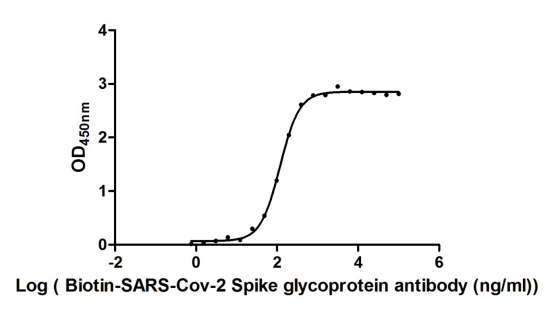
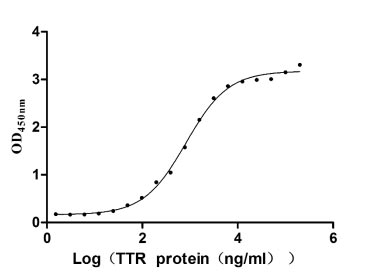
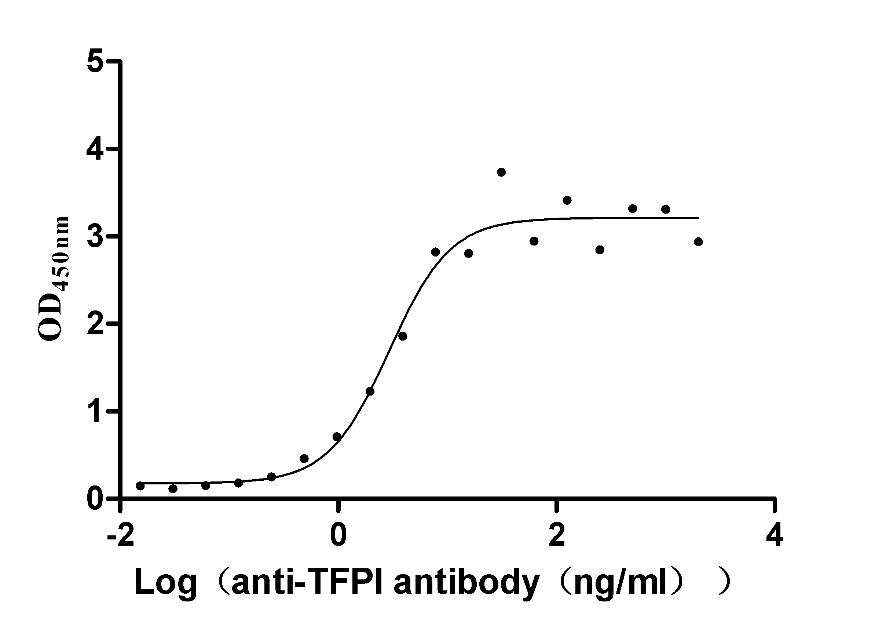
-AC1.jpg)
